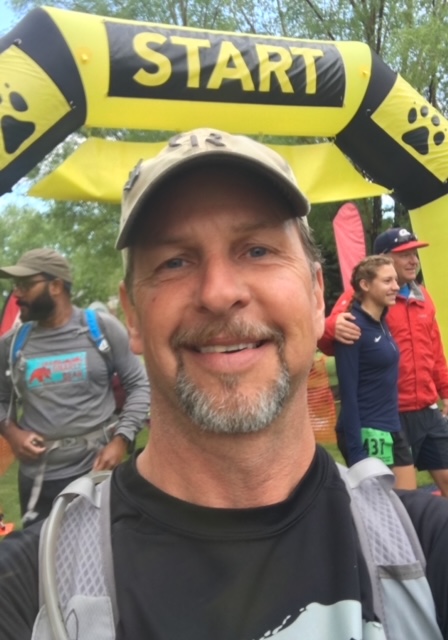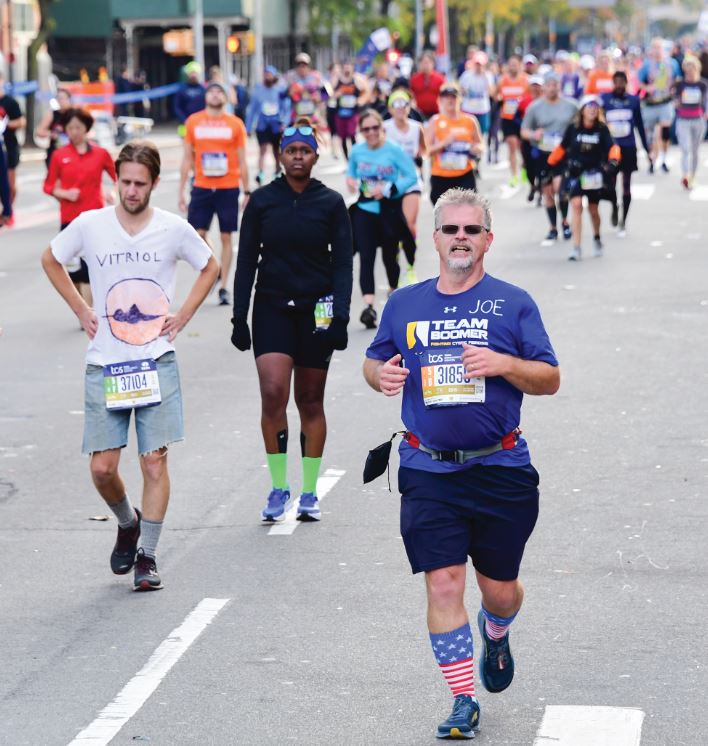Does it take a village to raise a runner? It doesn’t hurt. Running a marathon might be a solitary pursuit – it is, after all, the individual runner’s legs, knees and lungs that bear the brunt of the effort – but to be part of a like-minded group can keep a runner enthusiastic and resilient.
“It really helps to be held accountable, either to yourself or someone else,” says ultra-runner Paul Lind, formerly of Idaho National Laboratory (INL), now an internationally known professional endurance coach based in Challis.
%20(1).jpg)
Paul Lind atop one of central Idaho's peaks.
Eric Papaioannou wasn’t looking for inspiration in 2012 when he was operations and maintenance director at INL’s Materials and Fuels Complex (MFC). Instead, inspiration found him in the person of Lind, who was part of the team that helped prepare nuclear fuel experiments for detailed examination in MFC’s Hot Fuel Examination Facility. Lind’s love for running was contagious.

Eric Papaioannou at the River of No Return race.
“He got us all into running,” Papaioannou said. This involved more than simple encouragement. Lind put training plans together for everyone. From there, things took on a life of their own.
Passing the running baton
As he trained for longer races, including the 50-kilometer River of No Return Run organized by Lind, Papaioannou encouraged his co-worker Joe Campbell to push himself beyond the 5k races and try long-distance running, much like Lind did with him.
“I ran on the trail around the river with my folks, back when I was in junior high, before it was all landscaped into today’s Greenbelt,” he said. “I ran a lot in the Army. Even back then, it was more about endurance than it was about enjoying the exercise. I don’t have a runner's build.”
Soon after his training began, Campbell ran into an obstacle: shin splints. Rather than giving up, Campbell learned that zero drop shoes and forefoot running would help. Forefoot running is sometimes described as “running on your toes” and involves the ball of the runner’s foot hitting the ground first. Doing this, the muscles in the foot and calf absorb the impact, lowering the chance of shin splints or knee injuries.
Big Apple marathon
Campbell qualifies for the New York Marathon by running for a charity team called Team Boomer for his brother Perrin and sister Becky, both of whom died of cystic fibrosis. His first run, in 2017, he posted a time of 5:05. The second time, in 2021, was nearly identical, but during his third attempt his effort was hampered by blisters. He still finished, but it added more than an hour to his time.

Joe Campbell running in the New York City Marathon in 2021.
The first thing you want to remember is that you’re not there to compete with the elite runners, he said. Once you’ve accepted that, “It’s like a 26-mile party,” he said. “You’ve got one million spectators in five boroughs, and they’re all cheering you on by name. It’s why I keep going back to New York.”
Staying safe
Whether he is training a world class runner or a high school student, Lind said the most important thing he stresses is to not hurt yourself. “That means understanding what your body is capable of and to know what it’s doing to your body.”
For anyone starting out, commitment is key. You can start by walking at lunch, but you must get in the habit. “Promise to yourself that you’re going to do it every day for two weeks. Mark it on your calendar, but if you miss a day you have to start all over. If it’s 11 at night and you haven’t done it, you’ve got to do it.”
Similarly, Campbell believes the only thing stopping people from trying long-distancing running is themselves.
“All the reasons you give yourself for not doing something don’t hold water,” he said. “If I can do it, you can too. The distance, it’s all in your head.”
About Idaho National Laboratory
Battelle Energy Alliance manages INL for the U.S. Department of Energy’s Office of Nuclear Energy.